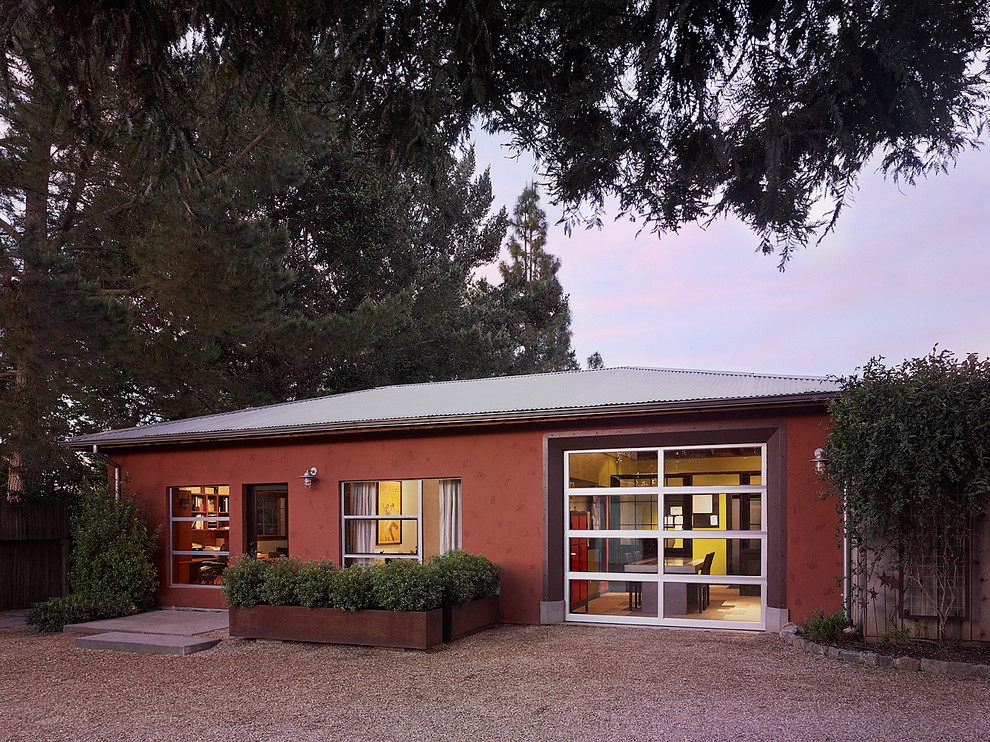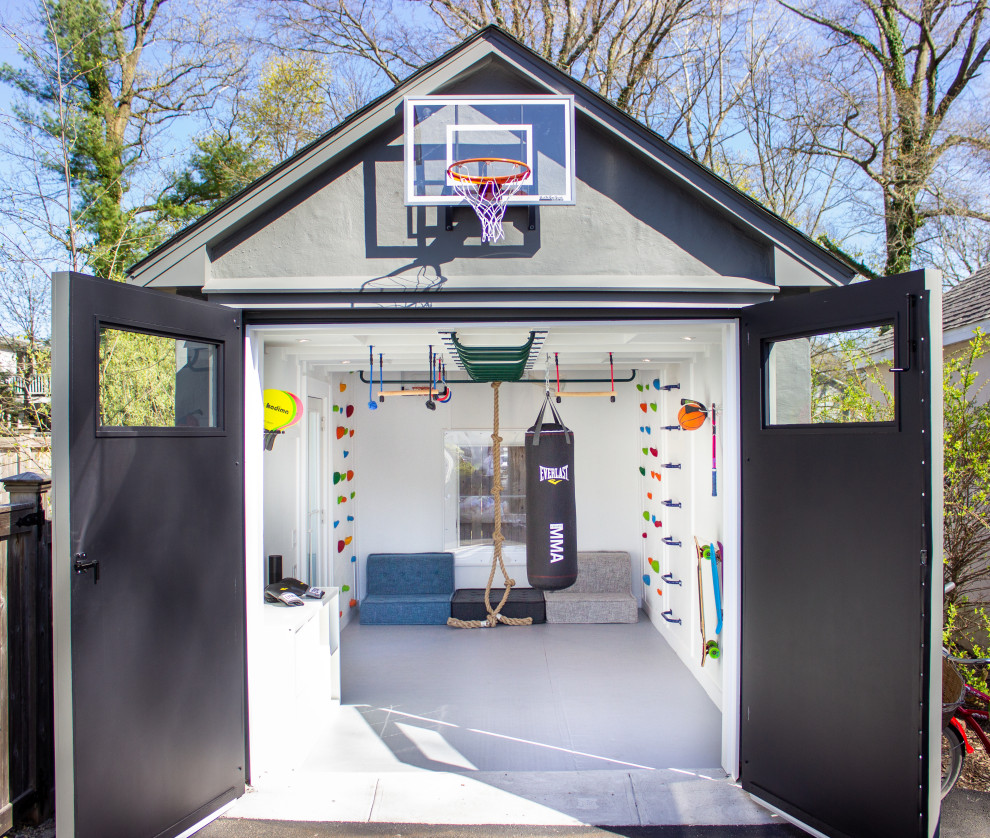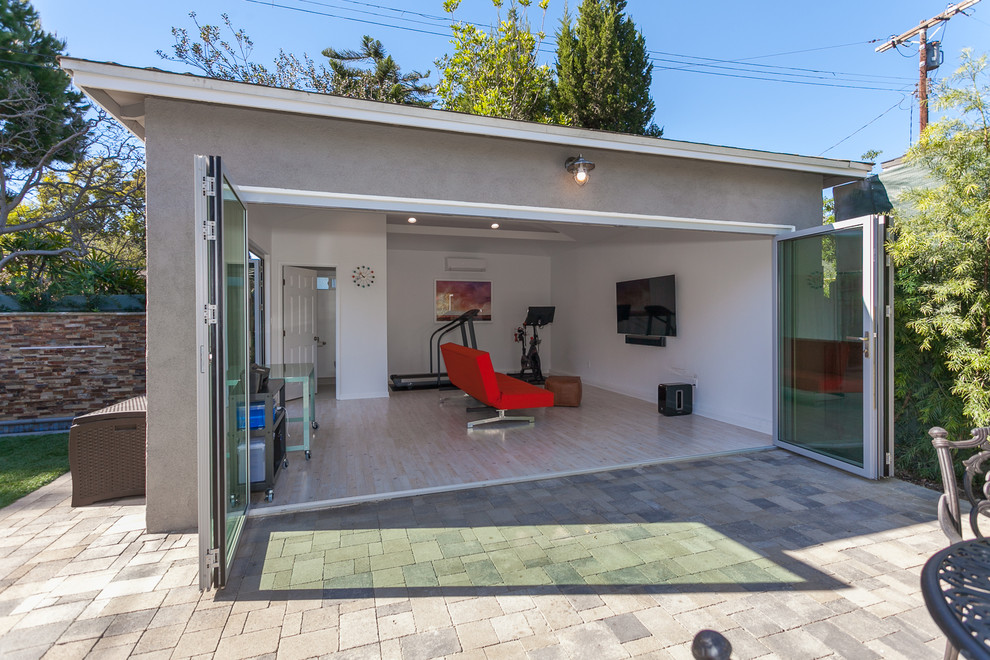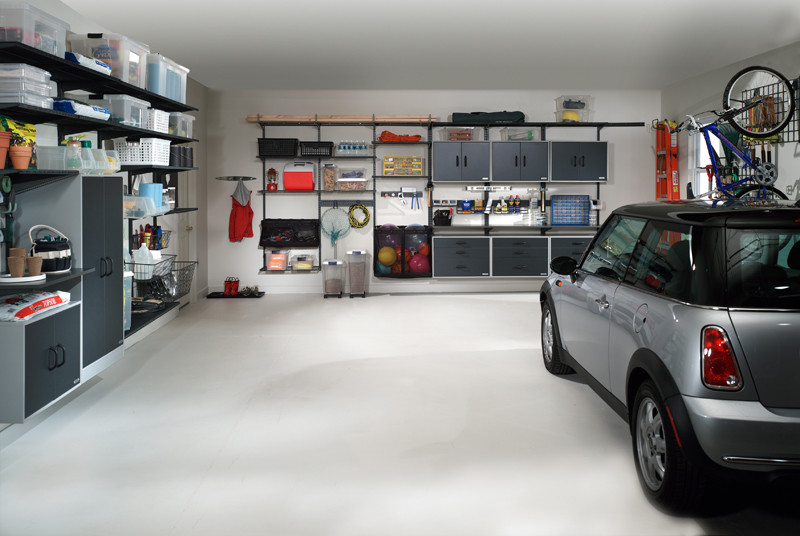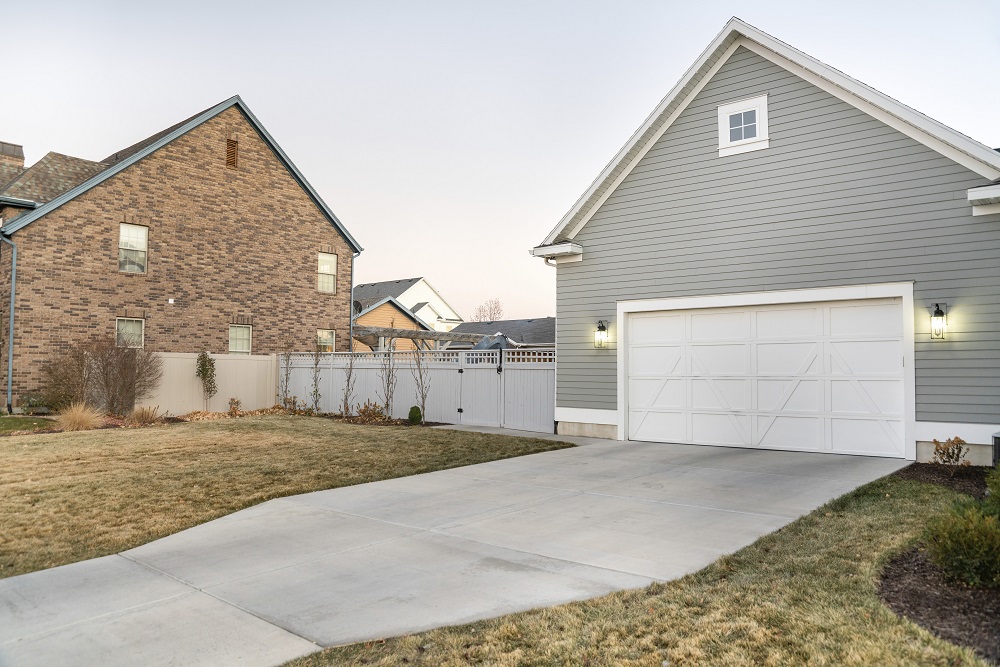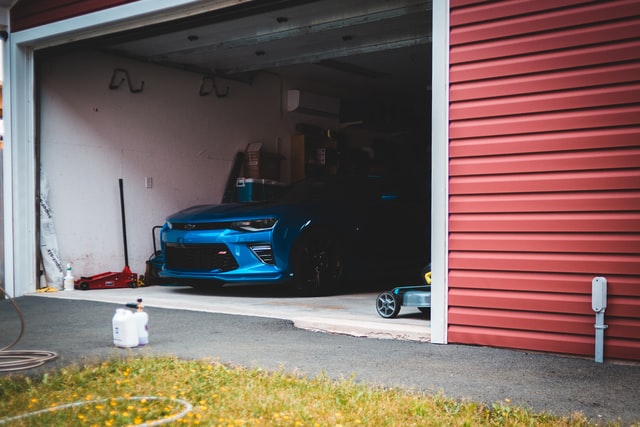People usually treat the garage as a storage place for their cars, tools and equipment, bikes, that antique desk that you never used but never could throw away…and so on. Garages can vary in size from compact one-car car garages to three-car monstrosities in which you can cram a small boat in. The main thing they have in common is that it’s a covered and sealed storage space. But it doesn’t have to be just that.
A garage provides extra square footage that can be turned into a novel, more functional space or more living area. It can be a simple DIY project you can knock out in a few weekends or something more involved that might require professional help. But is it worth it to convert a garage? And what would you even convert it into, you might ask?
Converting a garage may not be for everyone—for financial, legal, or living space reasons—but it can be a fun activity that yields more living space for you, not your car or leaf rakes.
Mud Room
This is probably the smallest and simplest conversion you can make; creating a mudroom doesn’t require any major construction or structural changes to your space.
Depending on the size of your home garage, you can probably do this and still have room to spare. A simple mudroom can freshen up the entryway to your home, and keep it cleaner.
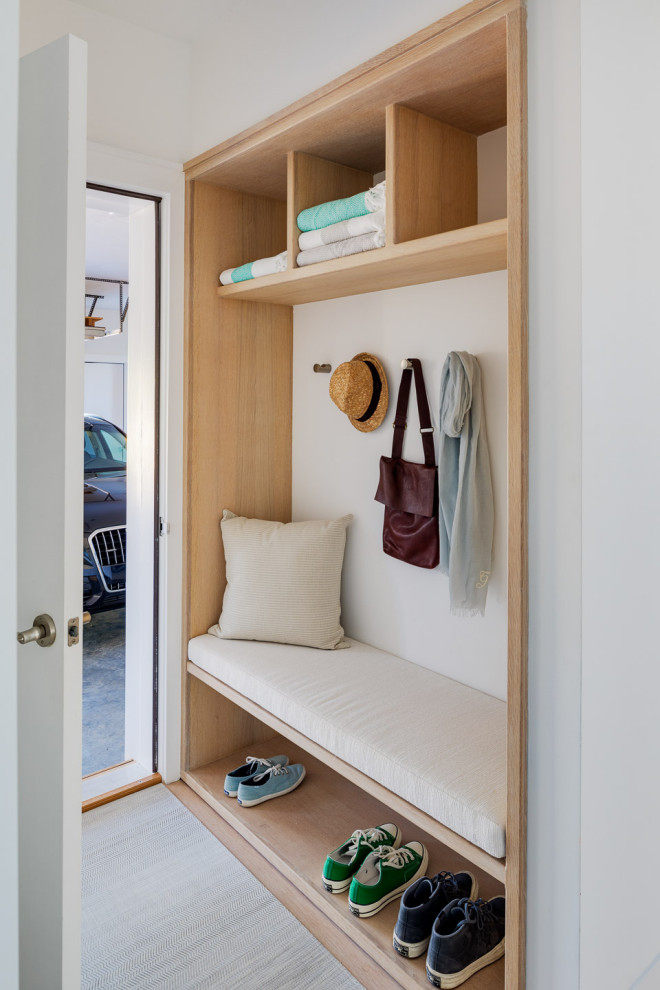
You can make a simple mudroom by adding some benches with storage for shoes, an armoire or coat hanger to hold your outerwear, and a sturdy rug. Because it’s a simple space, there are plenty of options—you can go simple, or invest in finer furniture and storage like a custom armoire with a nice brick accent wall, depending on your budget. If your budget, housing, and patience allow, you can even consider adding in a sink or tap for water for cleaning equipment you wouldn’t want to wash in the kitchen or bathroom sinks (think gardening equipment, dog toys).
Home Office
Even though COVID is in the rear-view mirror, many people are still working from home for most of their workweek. If you anticipate working from home for the most part in the future, your garage (if it’s insulated!) can offer some extra square footage for a nice workspace. Just like the mudroom idea, this doesn’t take very much to create. With a rug, a nice desk, a comfy office chair, and a mini-fridge for your between-project snacks, you can turn your garage into a sweet home office—you’ll never want to leave for the real office!
Photo by The Home Index Interior Design
It can be as fancy or simple as your budget allows. Just make sure that you’re able to get internet access, have ample electrical outlets for your monitor and electronics, and that your garage is insulated! If not, you can always add in extra power strips or space heaters.
Home Gym
This was also a popular COVID trend, but you can still jump on the home gym bandwagon if you’re a fitness-oriented family or person. A home gym is more convenient, especially in those winter months or if your gym membership expired. Again, the beauty of any DIY garage overhaul is that you can go as sophisticated as your space and budget allows.
A home gym can be as simple as some new yoga mats, a rack or bin with your exercise balls and resistance bands, or it can be a full-fledged bodybuilder’s dream. You can install rubber flooring, purchase your favorite exercise machines, squat racks and free weights, and benches, to suit your needs. Just note that installing these can be pretty tricky because of the heavy weight—you might need some assistance! Many manufacturers have made their machines and equipment home-gym friendly, and are just as durable and intensive as their standalone gym counterparts. Connected and smart equipment like Peloton and Tonal can help you attend classes and really give you that camaraderie feeling if you miss the thrill of attending a group class.
Pros to Converting Your Garage
The pros are specific to each person’s need—you might get increased work space and better concentration, a cleaner house with a mudroom, in better shape with the home gym, and so on. That’s the biggest pro about converting your garage: you can get more space for nearly any of your needs or interests, limited only by your imagination (and budget and blueprints). It’s often cheaper than building an actual addition to your house, if you don’t own a car (or have more space than your car requires).
Cons to Converting Your Garage
Besides the labor, work, and time involved in overhauling your garage into a living space, there are some noteworthy drawbacks you have to consider. First, you might not even be able to if your local permits and regulations don’t allow for it. Even if they do, since you’ve added onto your existing living space, it’ll get tacked onto your tax and housing bills, which can be expensive if you have high property taxes, in addition to the cost of the building permit you’ll be required to have.
Experts also agree that converting your garage doesn’t add value to your home’s worth. People typically use the garage for what garages were originally built for—sheltering vehicles and yard equipment. Future buyers may not be happy about seeing a carpeted garage or kitchenette fixtures there. This is something to keep in mind if you don’t plan on keeping your home indefinitely.
In the end, it’s your space. And if you need it more than your car does (or don’t own one), then a garage conversion can give your livable square footage a boost in a pinch. We hope that our article inspired you to come up with a great conversion idea of your own! Let us know what you’re thinking!
About the Author
Conor Prendergast is a freelance writer and copywriter with experience in content ranging from technology to healthcare to interior design. He has a BA from Muhlenberg College and is in his third year of medical school at New York Medical College.

